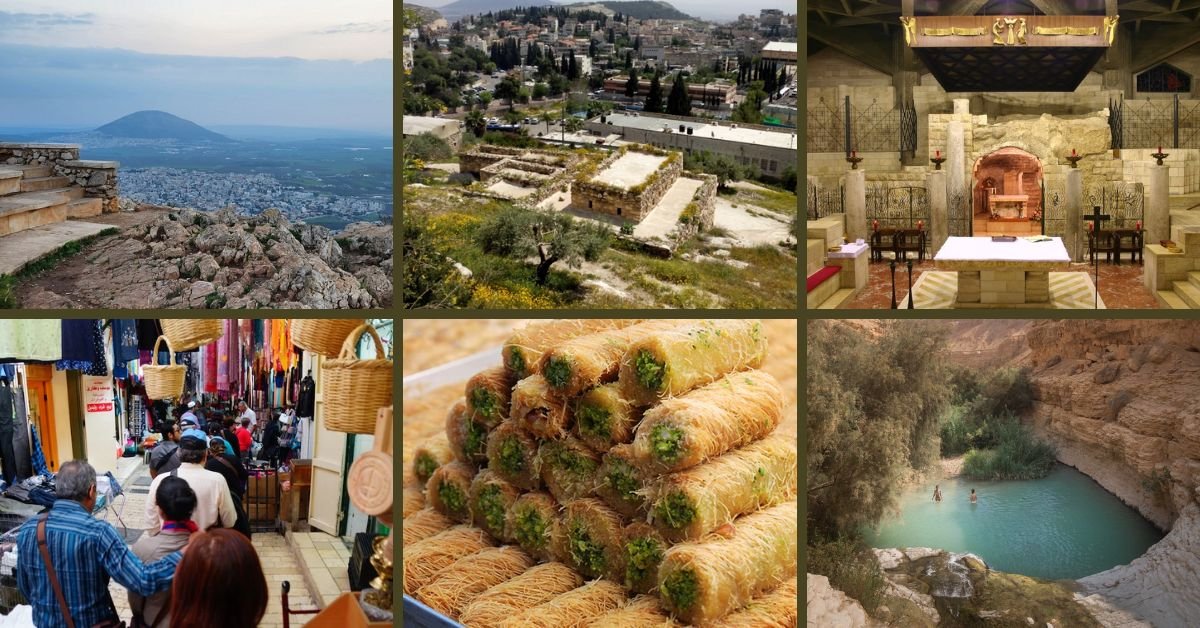Table Of Contents
Introduction
When we think about Nazareth, the first thing that comes to mind is that it is not just any small town in Israel; it is where Jesus spent his childhood, learning, growing, and probably wandering the same hills and streets that visitors can explore today.
However, beyond the famous sites like the Basilica of the Annunciation, a whole world of hidden gems is waiting to be discovered.
These are the spots that do not always make it onto the big tour bus itineraries, the ones that give you a real sense of the city’s soul.
As someone passionate about travel and history here at THOUSIF Inc. – WORLDWIDE, we have dug deep into what makes Nazareth special, pulling together stories, facts, and tips to help you see it in a fresh light.
Nazareth sits in the Lower Galilee region of northern Israel, surrounded by rolling hills and valleys that have seen centuries of human activity.
With a population of around 80,000 today, it is the largest Arab city in Israel.
Muslims and Christians live side by side, creating a vibrant cultural mix.
The name “Nazareth” itself might come from the Hebrew word “netzer,” meaning “branch” or “shoot,” which ties into biblical prophecies about the Messiah.
However, let us not get ahead of ourselves; we will dive into that later.
What draws people here?
For many, it is the religious significance, but there is so much more.
Imagine strolling through narrow alleyways where fresh spices mingle with the call to prayer, or hiking up a hill for panoramic views stretching out to the Jezreel Valley.
These hidden things are not just about sightseeing; they are about connecting with a place that feels alive with stories.
In this post, we will explore the history, the sacred sites off the main path, local eats, nature spots nearby, and even some cultural experiences that will make your trip memorable.
We have based this on recent explorations and updates.
Nazareth is evolving, with new archaeological finds and community initiatives popping up.
For instance, the city’s old market has been revitalized, offering a taste of authentic Arab hospitality.
Whether you are a history buff, a foodie, or just someone looking for a peaceful escape, Nazareth has something tucked away for you.
Let us go back in time to understand how this unassuming town became a cornerstone of world history.
One of my favorite hidden spots to kick things off is Mount Precipice, just south of the city.
It is not always crowded, but the views are breathtaking.
Legend has it that this is where an angry mob tried to throw Jesus off a cliff after he preached in the synagogue, as mentioned in the Gospel of Luke.
You cannot help but feel a connection to those ancient events standing there, feeling the wind.
It is a perfect spot for reflection, and if you are into photography, the golden hour light turns the landscape into something magical.
However, Nazareth is not all about the past; it is a living, breathing city.
The blend of old and new is what makes it so engaging.
You will find modern cafes next to centuries-old stone buildings, and people from all walks of life sharing stories over a cup of strong Arabic coffee.
As we go through this guide, we will share tips on navigating these hidden treasures, what to watch out for, and why they are worth your time.
Trust me, once you uncover these secrets, you will see why Nazareth deserves more than just a day trip.
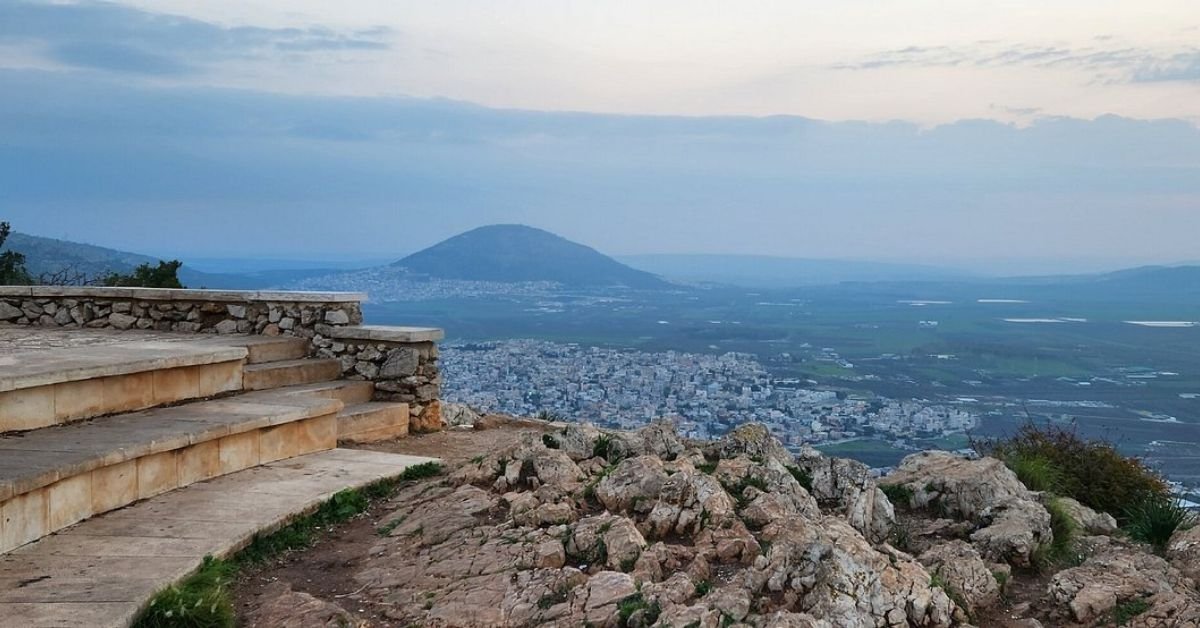
The Rich History Of Nazareth
Nazareth’s history is like a tapestry woven with threads from different eras, each adding depth to its character.
Archaeological evidence shows that the area has been inhabited since the Stone Age, but it really comes into focus during the Bronze and Iron Ages.
Back then, it was a small agricultural village, probably home to farmers tending olive groves and vineyards, much like parts of it still are today.
By the time of the Roman Empire, Nazareth was still tiny, with estimates suggesting only 120 to 150 people lived there during Jesus’ era.
The bustling city is hard to imagine now, but it explains why it was often overlooked in ancient texts.
The New Testament mentions it as Jesus’ hometown, where Mary and Joseph raised him.
After the biblical period, the town saw waves of rulers, Byzantines, Arabs, Crusaders, Ottomans, each leaving their mark.
During the Byzantine era, Nazareth became a pilgrimage site, with the first churches built over what were believed to be holy spots.
The Crusaders fortified it, constructing grand structures that later fell into ruins or were rebuilt.
Under Ottoman rule, it grew as a market town, attracting traders from surrounding areas.
In the 20th century, it played a role in the Arab-Israeli conflicts, but today, it is a symbol of coexistence.
The ancient bathhouse discovered beneath a souvenir shop in the 1990s is a hidden historical gem.
It is a Roman-era structure with hypocaust heating systems—the underfloor heating the Romans were famous for.
The owners turned it into a small museum, where you can see the original tiles and imagine bathers relaxing there 2,000 years ago.
It is not widely advertised, so it feels like a personal discovery when you stumble upon it.
Another layer is the Ottoman influence visible in the old city’s architecture.
Wander the winding streets, and you will spot arched doorways and stone facades that whisper tales of merchants and travelers.
Nazareth’s history is not just in museums; it is in the everyday, like the old mills where locals still grind spices, or the wells that have quenched thirst for generations.
Fast forward to modern times, and Nazareth is thriving as the “Arab capital of Israel.”
It is a cultural hub, with festivals celebrating everything from Christmas to local arts.
Recent digs have uncovered more about its Jewish roots in the Second Temple period, adding nuance to its biblical narrative.
If you plan a visit, timing it around the Nazareth Cultural Festival in summer could give you a taste of this evolving history through music, dance, and storytelling.
What we love most is how history here feels accessible.
You do not need a degree, just a curious mind, to appreciate it.
Take a guided walk through the old quarters, and you will hear stories passed down through families, making the past come alive in a way books cannot.
Speaking of which, Nazareth Village is a must for history lovers.
It is an open-air museum reconstructing life in the first century, with actors in period costumes demonstrating crafts like weaving and carpentry.
It is hidden because it is not right in the city center; you have to seek it out, but once there, it is immersive.
We remember watching a shepherd tend to sheep and thinking, “This is what Jesus might have seen every day.”
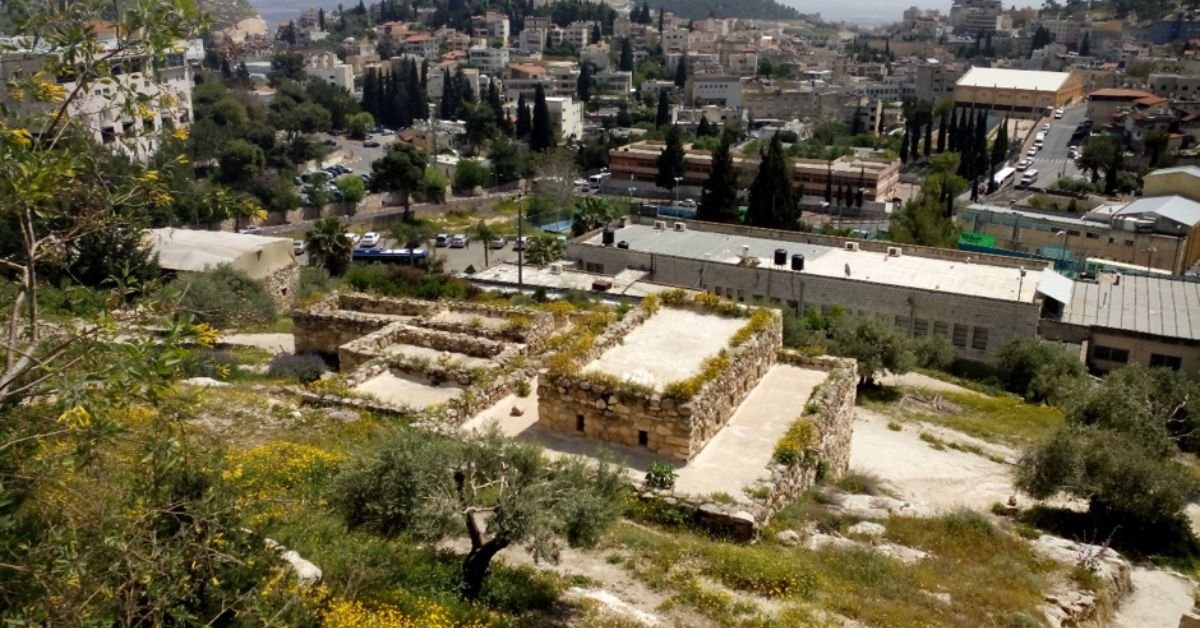
Biblical Significance Of Nazareth
Nazareth holds a special place in the hearts of Christians worldwide as the boyhood home of Jesus Christ.
According to the Gospels, this is where the angel Gabriel appeared to Mary, announcing she would bear the Son of God, the event known as the Annunciation.
It is also where Jesus grew up, learned his trade as a carpenter, and began his ministry.
The town’s biblical mentions are sparse but powerful.
The Book of Matthew prophesied that the Messiah would be called a Nazarene, linking to Isaiah’s words about a branch from Jesse’s roots.
When Jesus returned to preach in the synagogue, his townsfolk rejected him, leading to that dramatic scene at the cliff’s edge.
These stories make Nazareth more than a location; it symbolizes humble beginnings and divine purpose.
Hidden in this significance are lesser-known sites like the Synagogue Church, built over what might be the remains of the first-century synagogue where Jesus read from Isaiah.
It is a quiet place, often empty, where you can sit and ponder those events.
The church is modest, with Crusader-era walls and a sense of timelessness.
Another biblical hidden gem is Mary’s Well, which, according to some accounts, is traditionally where the Annunciation occurred.
Today, it is a public square with a fountain surrounded by shops, but if you look at its history, you realize its importance in daily life.
Back then, women gathered there to drink water and share news.
Nazareth’s role extends to the broader Galilee region, where Jesus performed many miracles.
Being his base, it offers a starting point for trails like the Jesus Trail, a 65-kilometer hike connecting biblical sites.
Walking it, you follow in his footsteps, from Nazareth to Capernaum, passing hidden spots like ancient olive groves and ruins.
For me, the biblical essence is in the ordinary, the hills where Jesus might have prayed, the views that inspired parables.
It is not flashy but profound, reminding us that great things come from small places.
Exploring Hidden Religious Sites
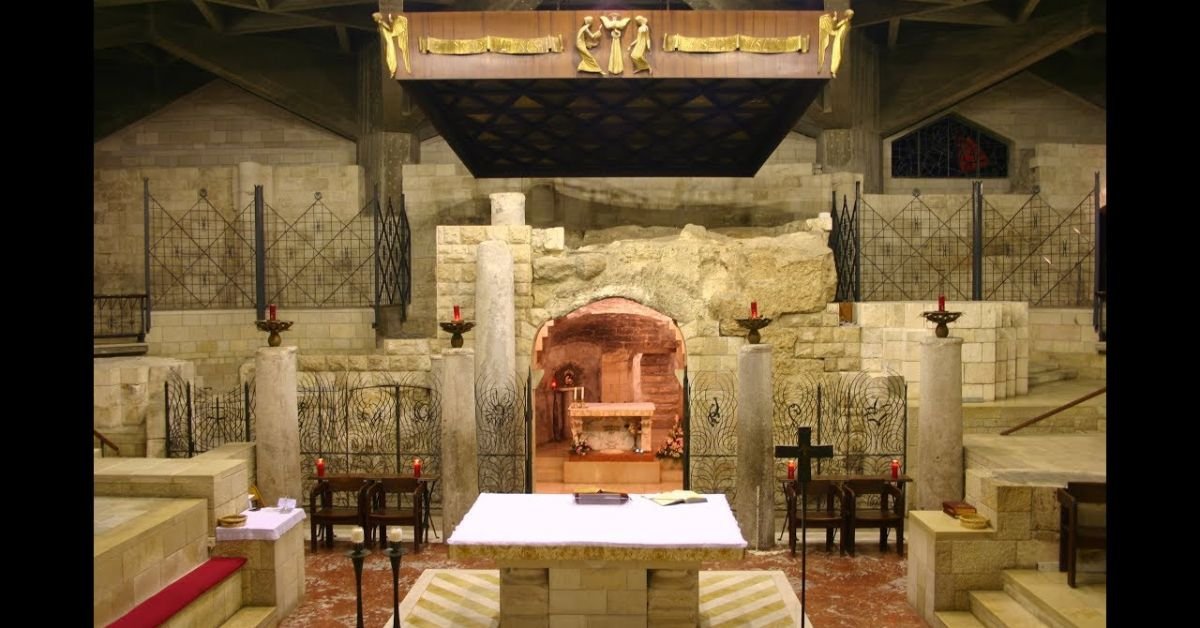
While the Basilica of the Annunciation is iconic, Nazareth’s hidden religious sites offer intimate experiences away from the crowds.
Let us start with the Greek Orthodox Church of the Annunciation, St. Gabriel’s Church.
Tucked near Mary’s Well, it is built over a natural spring believed to be the site of the Annunciation in Orthodox tradition.
The interior is adorned with beautiful frescoes depicting biblical scenes, and the sound of water flowing beneath adds a serene touch.
It is less visited than the Catholic basilica so you can linger in peace.
Next, the Salesian Church of Jesus the Adolescent sits atop a hill, offering spiritual solace and stunning views.
Built in the 1920s, it commemorates Jesus’ teenage years in Nazareth.
The climb up is a bit of a hike, hidden stairs wind through residential areas, but the reward is a quiet sanctuary with Art Deco elements and a peaceful garden.
Do not miss the Centre International Marie de Nazareth, a multimedia center exploring Mary’s life.
Hidden behind the basilica, it features exhibits, films, and archaeological finds.
The rooftop garden is a gem, with plants mentioned in the Bible and panoramic vistas.
For something offbeat, visit the Nazareth Nuns’ Convent near the basilica.
It houses an impressive underground archaeology site with Byzantine mosaics and tombs.
It is not always open, so check ahead, but when it is, it is like stepping into a time capsule.
Another hidden spot is the Mensa Christi Church, or Table of Christ.
Legend says Jesus dined here with his disciples on a rock table after the resurrection.
It is small, unassuming, and perfect for quiet prayer.
These sites show Nazareth’s layered faith traditions.
With about 30% Christian and 69% Muslim residents, the city harmonizes diverse beliefs.
Explore the White Mosque in the old city to glimpse Islamic heritage.
The oldest in Nazareth, dating to 1800, has beautiful calligraphy and a welcoming atmosphere.
Table of Hidden Religious Sites:
| Site | Location | Why | Key |
|---|---|---|---|
| Greek Orthodox Church of the Annunciation | Near Mary’s Well | Less touristy than the Catholic counterpart | Frescoes and an underground spring |
| Salesian Church of Jesus the Adolescent | Hilltop in Upper Nazareth | Requires a hike to reach | Views and Art Deco interior |
| Centre International Marie de Nazareth | Behind Basilica | Multimedia focus, not a traditional church | Rooftop biblical garden |
| Nazareth Nuns’ Convent | Near Basilica | Limited hours | Underground Byzantine ruins |
| Mensa Christi Church | Old City | Small and local | Legendary rock table |
| White Mosque | Old Market area | Non-Christian site in Christian hub | Historical architecture and peace |
Each offers a unique angle on Nazareth’s spiritual tapestry, making your visit more than just checking boxes.
Off-The-Beaten-Path Attractions
Beyond religion, Nazareth brims with attractions that feel like secrets shared among locals.
The Old Market, or Souk, is a labyrinth of stalls selling everything from spices to handicrafts.
It is bustling yet intimate, haggle for a bag of za’atar or sample fresh halva.
Hidden within is El Babour Spice Mill, a 19th-century grinder still in operation.
The aroma of freshly ground coffee is intoxicating.
Venture to the Fauzi Azar Inn, a restored 200-year-old Arab mansion now a guesthouse.
Even if you do not stay, tour its Ottoman architecture and hidden courtyard, it is a portal to the past.
The Nazareth Iris Trail on Givat HaMoreh is a seasonal delight for nature lovers.
In late winter, the trail blooms with irises.
It is a short hike with wildflowers and views, far from crowds.
Another find is the underground synagogue beneath the Church of the Synagogue.
It is a remnant of a first-century structure, accessible via a small entrance.
Art enthusiasts, check the Nazareth Center for Culture and Arts – hidden events like poetry readings showcase local talent.
These spots reveal Nazareth’s multifaceted charm, blending history, nature, and community.
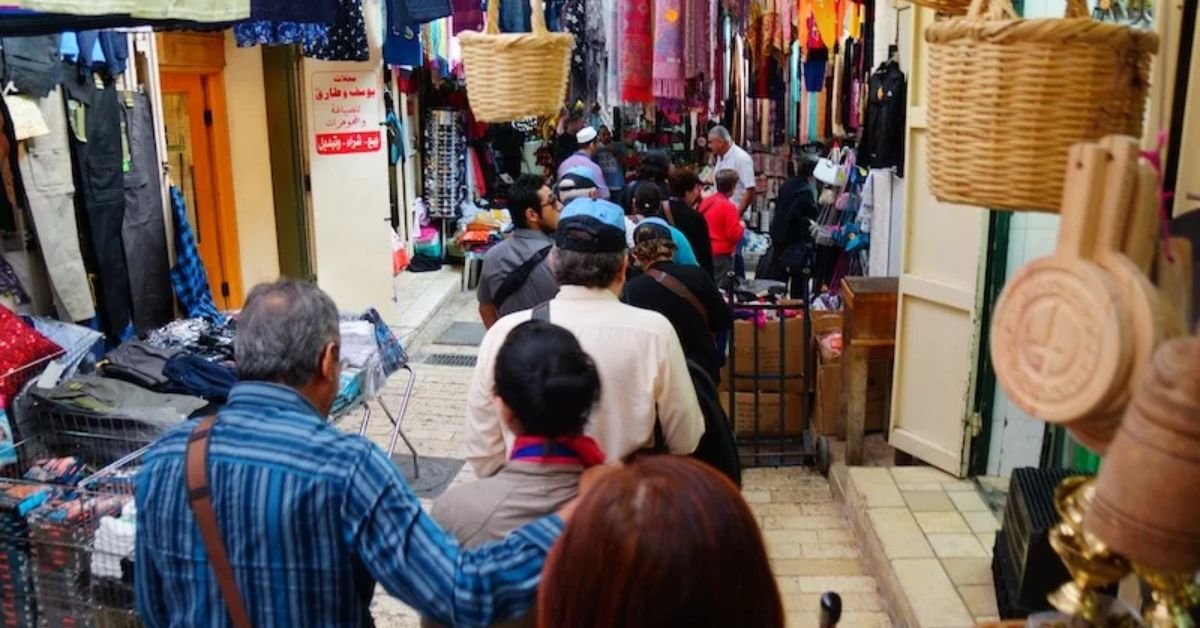
Savoring Local Cuisine And Markets
Nazareth’s food scene is a hidden treasure trove of Arab flavors.
Start at the Old Market for street eats like falafel wrapped in fresh pita, musakhan, and chicken with sumac on flatbread.
Hidden gems include Diana Restaurant for grilled meats and Abu Maher for kebabs.
Try knafeh at local bakeries, a gooey cheese pastry with pistachios for sweets.
Join a cooking class at El Babour to learn freekeh dishes.
These simple yet flavorful meals use olive oil, herbs, and legumes.
Markets offer hummus varieties and pickled veggies.
It is food that tells stories of family and tradition.

Natural Spots Near Nazareth
While Nazareth is urban, nearby nature spots provide respite. Mount Precipice offers hikes with valley views.
The Jesus Trail winds through the countryside, passing Zippori National Park with ruins and mosaics.
Ein Gedi, farther, has oases and waterfalls for refreshing dips.
Closer, the Nazareth Iris Reserve blooms colorfully.
These spots balance city exploration with nature’s calm.
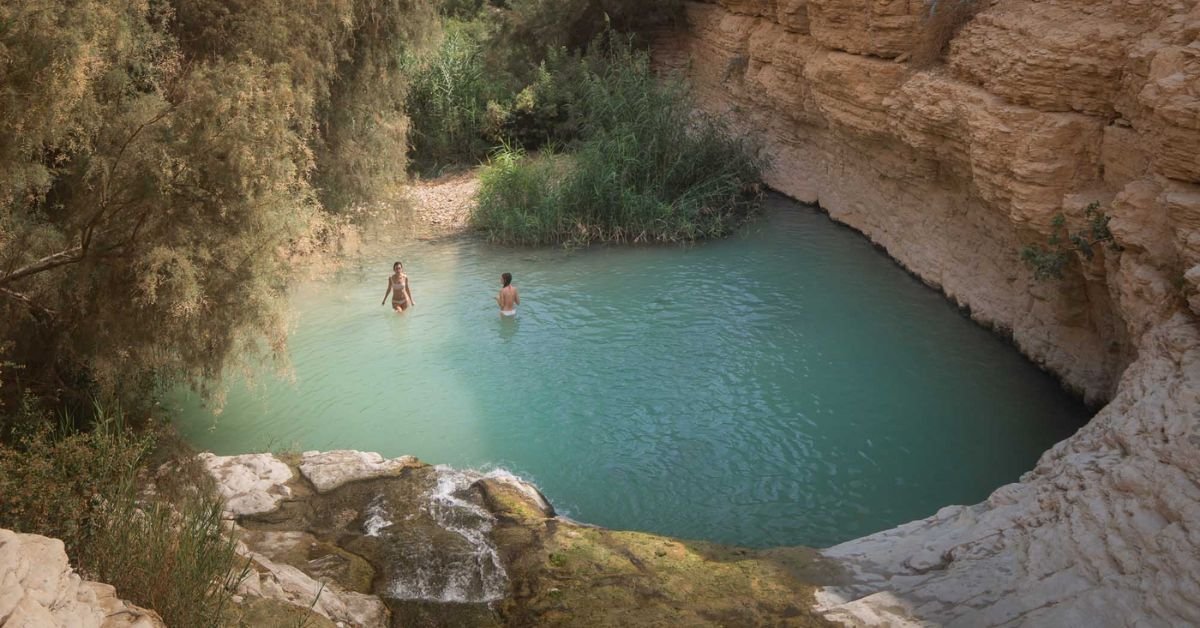
Cultural Experiences In Nazareth
Immerse in Nazareth’s culture through free walking tours of the old city, hearing local tales.
Stay at Fauzi Azar for cultural nights with music and stories.
Attend festivals like Christmas celebrations or the Nazareth Festival for dance and art.
Cooking classes and market visits offer hands-on experiences. It is about connecting with people, making memories.
Interesting Trivia
Did you know? Archaeological research reveals that in Jesus’ time, Nazareth had only about 120-150 residents, making it a tiny village. However, one of history’s most influential figures came from this humble spot!
Visitor Tips
Best time to visit: Spring or fall for mild weather. Wear comfortable shoes for walking.
Respect local customs, and modest dress in religious sites.
Try public transport or taxis.
Stay hydrated and sample street food safely.
Conclusion
As we wrap up our journey through Nazareth’s hidden gems, we hope you have experienced the magic of this special place.
From sacred sites to flavorful bites, it is a town that rewards the curious.
At THOUSIF Inc. – WORLDWIDE, we love sharing these insights.
Check out our site for more articles on Israel’s wonders.
Safe travels, and may your adventures be as enriching as Nazareth itself!
